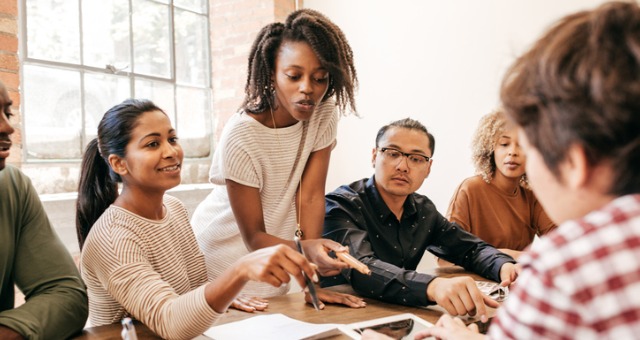Faculty Learning Communities (FLC) are spaces that allow for improving one’s pedagogy, seeking intellectual stimulation, meeting other colleagues who are interested in similar topics, or simply fulfilling service duties assigned by a higher institution, among others. As a senior lecturer in my former institution, I facilitated an FLC in which my goal was to create a community where my colleagues and I could engage with educational content, material, and research from different perspectives in the United States and abroad. I also wanted to create a space to connect with others and reduce faculty burnout. The FLC I facilitated dealt specifically with Cross-cultural Perspectives in Higher Education. Therefore, I sought to engage with colleagues in this learning community to challenge how biases about race, ethnicity, gender, and international issues interact with how we teach, how we engage our students in critical topics in our classrooms, and how we connect with, and support, our colleagues in the university community.
Although the FLC I facilitated dealt specifically with the theme of cross-cultural perspectives in higher education, I wanted to share five skills I learned in the process that can be applied to facilitating any FLC. These skills helped me build rapport with my colleagues and commit to critical pedagogies:
1. Create a safe space.
When you are facilitating a faculty learning community, you need to create a safe space for people to be willing to share their ideas. I greeted everyone with a big smile, thanking everyone for sharing their space with me, then stated my name, my department, my pronouns, and explained why it is important to state one’s pronouns. I also expressed the need to engage in communities that encourage reflection about, and commitment to, a critical education where matters of inclusion and equity are important. This opened the floor for other people to introduce themselves. I knew I was on the right path when everybody’s shared motive was to improve the status of education. To achieve this goal, I, the facilitator, had to emphasize that this is a safe space where everyone could ask questions and express their ideas freely about education, administration, obstacles facing faculty, teaching, etc. However, I had to emphasize that creating a safe space also means one needs to be open to being challenged. After all, we are here to improve education and to make sure we create a safe space for our students, colleagues, and staff.
2. Listen. Listen. Listen.
In facilitating a faculty learning community, one needs to listen carefully to every individual in the room. Not only does this create a space for inclusion, but it also gives agency to every single person in the room. The facilitator is not there to profess how things should be done, but to make sure everyone has a voice and is expressing their ideas, concerns, and obstacles as one is doing their job. When the facilitator listens, it allows them to further the conversation and shows they care about each person’s voice. This promotes dialogue and trust building.
3. Challenge biases right away.
People hold different beliefs about education, as people come from different backgrounds. In order to commit to seeking to understand education, one needs to face their own biases. If someone assumes a certain characteristic about a specific group of students, faculty or staff, the facilitator has to challenge it right away, especially if no one in the room does. A part of building trust and creating a safe space is to also challenge biased educational beliefs. If someone continues to elaborate on a biased idea, first have them clarify their thoughts and ideas. Then, if the facilitator still sees signs of bias, the facilitator can bring forth the bias and bring other people into the conversation.
4. Stay on topic.
After listening to your peers’ experiences, make sure you draw connections between what your peers are sharing and the material presented that week, especially if/when people drift away from the topic. Bringing people back to the topic encourages everyone to make connections between the personal experience and how it relates to the institution, and education at large. It also encourages people to engage with ways to improve higher education.
5. Reflect on existing practices.
At the beginning of each meeting, it is important to discuss how what we are learning in the faculty community is related to our practice. Instead of assuming the role of a leader who gives new tasks for faculty to do, become the peer who discusses how what we are learning together in these faculty spaces is related to the work we already do in the classroom with our students, our colleagues, and university community. Before engaging in new steps, one should be committed to reflecting on existing practices and if and/or how they might be biased. This reflection can help improve and transform future practices where we think about education from different global perspectives and where we challenge ethnocentric practices.
Faculty Learning Communities are important spaces for faculty to learn, connect, share ideas, and think about critical ways to unlearn certain practices and learn how to critically commit to an education that is inclusive and equitable. This FLC helped me think about my own practices as an international scholar and contributed to a committed shared learning with my colleagues.
Dr. Mounia Mnouer is an independent scholar focused on higher education, inclusion and equity, African diaspora, Indigenous Amazigh language, and cultural revitalization.






